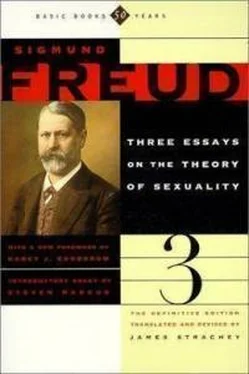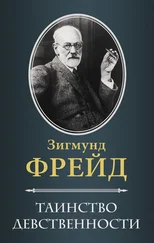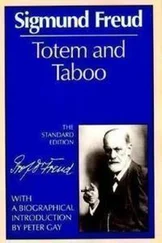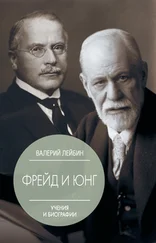*Constitution and Heredity.*—In the first place, we must mention here the congenital variation of the sexual constitution , upon which the greatest weight probably falls, but the existence of which, as may be easily understood, can be established only through its later manifestations and even then not always with great certainty. We understand by it a preponderance of one or another of the manifold sources of the sexual excitement, and we believe that such a difference of disposition must always come to expression in the final result, even if it should remain within normal limits. Of course, we can also imagine certain variations of the original disposition that even without further aid must necessarily lead to the formation of an abnormal sexual life. One can call these "degenerative" and consider them as an expression of hereditary deterioration. In this connection I have to report a remarkable fact. In more than half of the severe cases of hysteria, compulsion neuroses, etc., which I have treated by psychotherapy, I have succeeded in positively demonstrating that their fathers have gone through an attack of syphilis before marriage; they have either suffered from tabes or general paresis, or there was a definite history of lues. I expressly add that the children who were later neurotic showed absolutely no signs of hereditary lues, so that the abnormal sexual constitution was to be considered as the last off–shoot of the luetic heredity. As far as it is now from my thoughts to put down a descent from syphilitic parents as a regular and indispensable etiological determination of the neuropathic constitution, I nevertheless maintain that the coincidence observed by me is not accidental and not without significance.
The hereditary relations of the positive perverts are not so well known because they know how to avoid inquiry. Still there is reason to believe that the same holds true in the perversions as in the neuroses. We often find perversions and psychoneuroses in the different sexes of the same family, so distributed that the male members, or one of them, is a positive pervert, while the females, following the repressive tendencies of their sex, are negative perverts or hysterics. This is a good example of the substantial relations between the two disturbances which I have discovered.
*Further Elaboration.*—It cannot, however, be maintained that the structure of the sexual life is rendered finally complete by the addition of the diverse components of the sexual constitution. On the contrary, qualifications continue to appear and new possibilities result, depending upon the fate experienced by the sexual streams originating from the individual sources. This further elaboration is evidently the final and decisive one while the constitution described as uniform may lead to three final issues. If all the dispositions assumed to be abnormal retain their relative proportion, and are strengthened with maturity, the ultimate result can only be a perverse sexual life. The analysis of such abnormally constituted dispositions has not yet been thoroughly undertaken, but we already know cases that can be readily explained in the light of these theories. Authors believe, for example, that a whole series of fixation perversions must necessarily have had as their basis a congenital weakness of the sexual impulse. The statement seems to me untenable in this form, but it becomes ingenious if it refers to a constitutional weakness of one factor in the sexual impulse, namely, the genital zone, which later in the interests of propagation accepts as a function the sum of the individual sexual activities. In this case the summation which is demanded in puberty must fail and the strongest of the other sexual components continues its activity as a perversion. [68]
*Repression.*—Another issue results if in the course of development certain powerful components experience a repression —which we must carefully note is not a suspension. The excitations in question are produced as usual but are prevented from attaining their aim by psychic hindrances, and are driven off into many other paths until they express themselves in a symptom. The result can be an almost normal sexual life—usually a limited one—but supplemented by psychoneurotic disease. It is these cases that become so familiar to us through the psychoanalytic investigation of neurotics. The sexual life of such persons begins like that of perverts, a considerable part of their childhood is filled up with perverse sexual activity which occasionally extends far beyond the period of maturity, but owing to inner reasons a repressive change then results—usually before puberty, but now and then even much later—and from this point on without any extinction of the old feelings there appears a neurosis instead of a perversion. One may recall here the saying, "Junge Hure, alte Betschwester,"—only here youth has turned out to be much too short. The relieving of the perversion by the neurosis in the life of the same person, as well as the above mentioned distribution of perversion and hysteria in different persons of the same family, must be placed side by side with the fact that the neurosis is the negative of the perversion.
*Sublimation.*—The third issue in abnormal constitutional dispositions is made possible by the process of "sublimation," through which the powerful excitations from individual sources of sexuality are discharged and utilized in other spheres, so that a considerable increase of psychic capacity results from an, in itself dangerous, predisposition. This forms one the sources of artistic activity, and, according as such sublimation is complete or incomplete, the analysis of the character of highly gifted, especially of artistically disposed persons, will show any proportionate, blending between productive ability, perversion, and neurosis. A sub–species of sublimation is the suppression through reaction–formation , which, as we have found, begins even in the latency period of infancy, only to continue throughout life in favorable cases. What we call the character of a person is built up to a great extent from the material of sexual excitations; it is composed of impulses fixed since infancy and won through sublimation, and of such constructions as are destined to suppress effectually those perverse feelings which are recognized as useless. The general perverse sexual disposition of childhood can therefore be esteemed as a source of a number of our virtues, insofar as it incites their creation through the formation of reactions. [69]
*Accidental Experiences.*—All other influences lose in significance when compared with the sexual discharges, shifts of repressions, and sublimations; the inner determinations for the last two processes are totally unknown to us. He who includes repressions and sublimations among constitutional predispositions, and considers them as the living manifestations of the same, has surely the right to maintain that the final structure of the sexual life is above all the result of the congenital constitution. No intelligent person, however, will dispute that in such a coöperation of factors there is also room for the modifying influences of occasional factors derived from experience in childhood and later on.
It is not easy to estimate the effectiveness of the constitutional and of the occasional factors in their relation to each other. Theory is always inclined to overestimate the first while therapeutic practice renders prominent the significance of the latter. By no means should it be forgotten that between the two there exists a relation of coöperation and not of exclusion. The constitutional factor must wait for experiences which bring it to the surface, while the occasional needs the support of the constitutional factor in order to become effective. For the majority of cases one can imagine a so–called "etiological group" in which the declining intensities of one factor become balanced by the rise in the others, but there is no reason to deny the existence of extremes at the ends of the group.
Читать дальше







